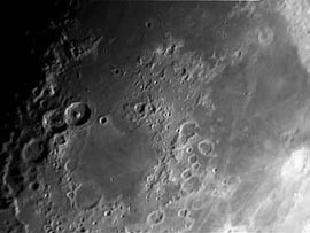Tammy Plotner and Jeff Barber, Universe Today

THEOPHILUS, CYRILLUS AND CATHERINA ON THE TERMINATOR WITH DORSA BEAUMONT CREDIT: ROGER WARNER
Today we will observe the moon again, as usual in the first part of the lunar month. We will see the circle of the three rings - craters that are easy to identify - Theophilus, Cyrillus and Katarina. Next to them is the only prominent route on the moon that has never been given an official name. We will cross the Sea of Nectar (Mare Nectaris) from Theophius to the shallow crater in Yoment in the south, a long, thin and bright line can be seen. This is an example of
What is known as the back of the moon is nothing more than a thin ridge or crease. Chances are that this crease is a "wave" in the lava that flowed and solidified when the Nectar Sea formed. This specific crease will look amazing tonight due
The low lighting angle. Does he have a name? Yes, unofficially he is known as "Dorsa Beaumont," but no matter what he is called, he remains one of the most beautiful names.
We will continue watching a double star. The star was named after King Charles II of Aglia by Royal Astronomer Edmund Halley in 1725. Cor Caroli "the Heart of Charles" (Alpha Canes Venatici) is a great example of a bicolor double star. Cor Caroli, whose brightness is 2.9 can be located by moving a fist width towards the southwest from the Alkaid star (Ata Ursa Majoris) although the pair cannot be separated in binoculars, in almost any telescope you can distinguish between the main pale yellow star and the beautiful blue star.
Tonight Jupiter appears with a diameter of 44.6 seconds of arc, almost twice the size of Mars seen from Earth. At its current size, only a 40x magnification telescope is required to make the planet's disk look like the moon does without the aid of a telescope. This magnification will reveal three main bands of clouds in the atmosphere. Look for the dark texture of the two bands on either side of the equator separated by a light band in the equatorial region. These belts and the line separating them were first seen in 1664 by a number of astronomers including Niccolò Zucchi, Gian Domenico Cassini, Robert Hooke and Gilles-Francois Gutains.
At the same magnification you can also see the four bright moons of Jupiter, which were first discovered by Galileo Galilei after a week-long observation that began on January 7, 1610.
